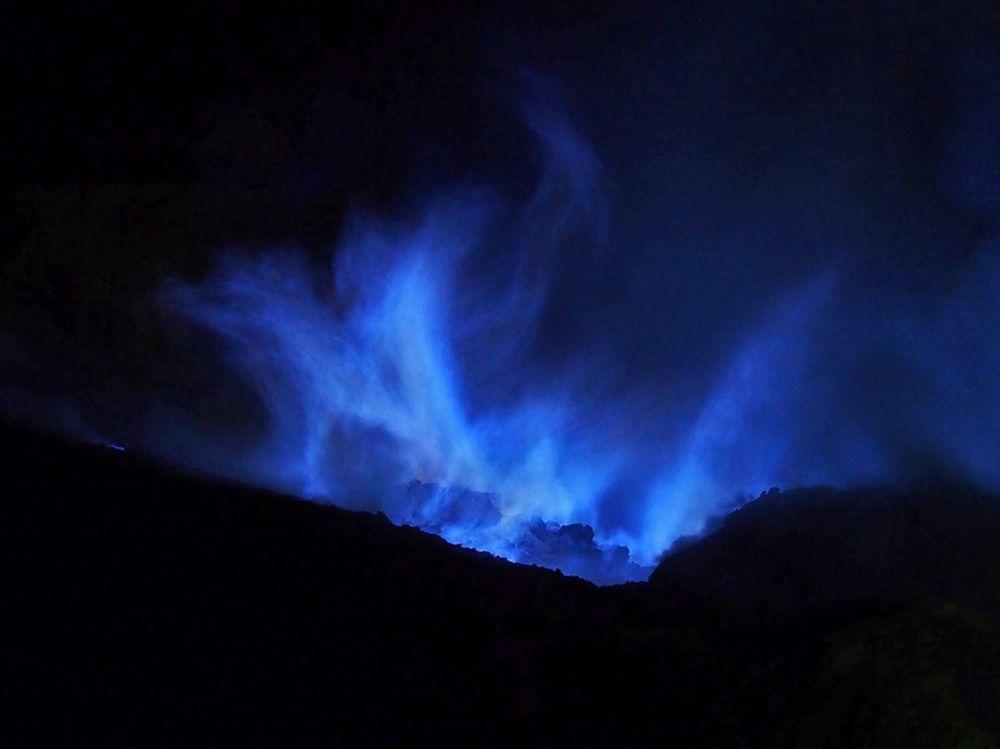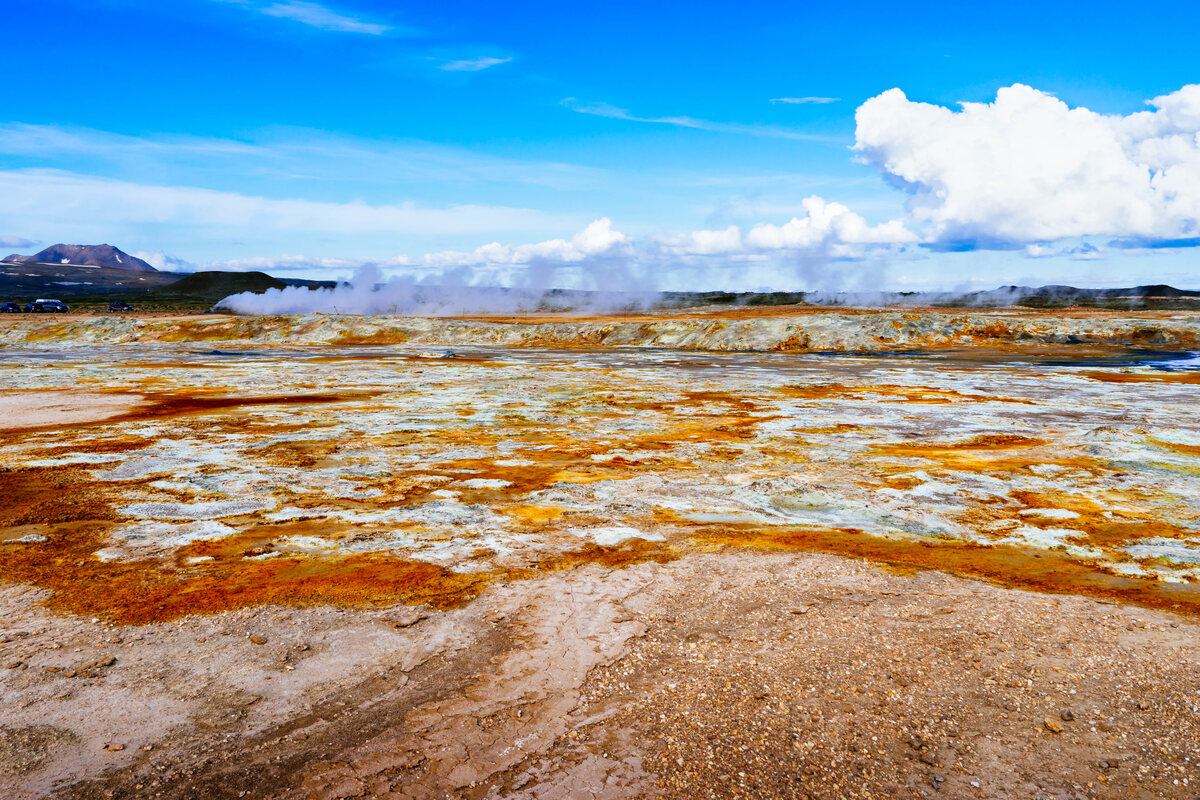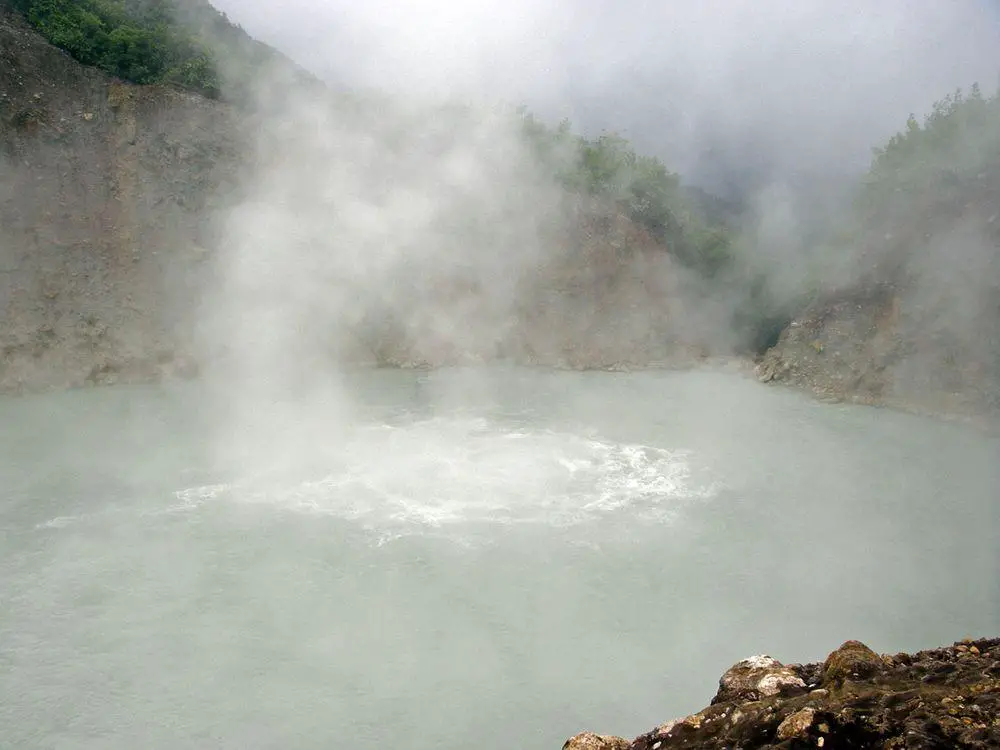Wondermondo 🢖 Categories of wonders 🢖 Geological wonders 🢖 Geothermal features 🢖 Fumaroles
Category
Unusual fumaroles
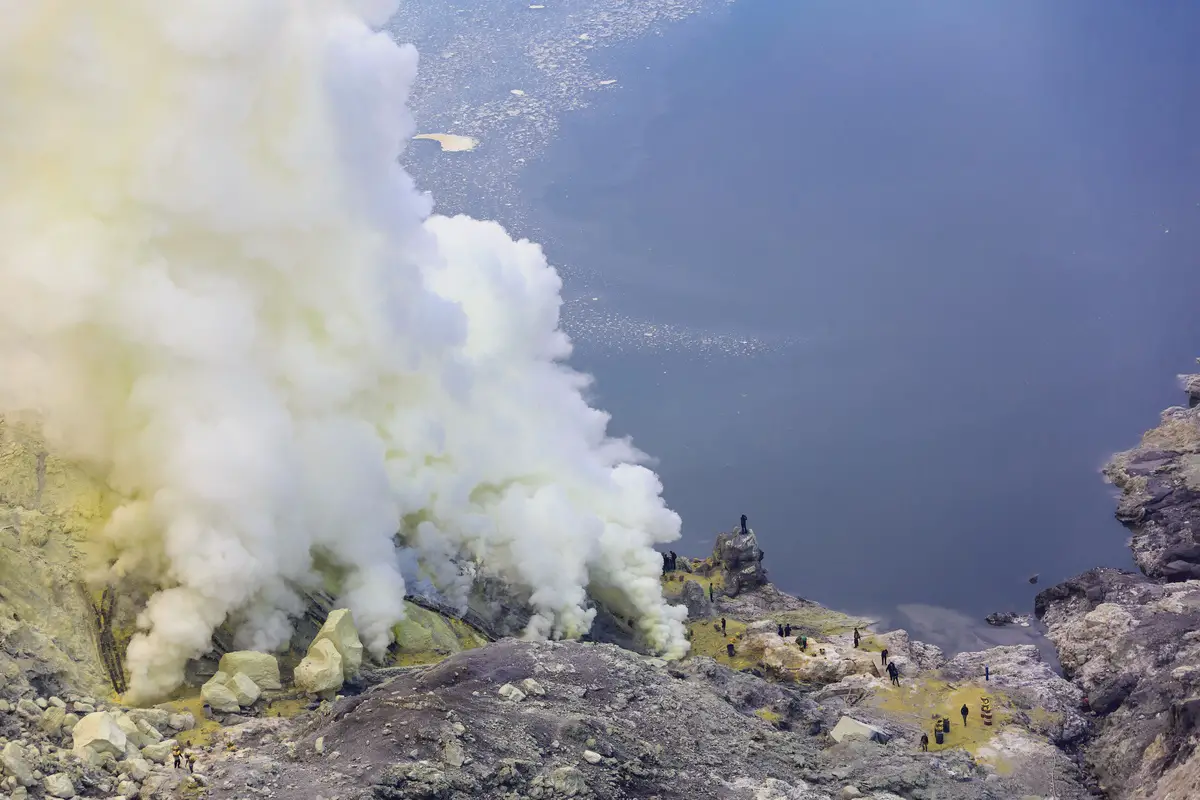
 Described fumaroles
Described fumaroles
If you see this after your page is loaded completely, leafletJS files are missing.
 What is included in this category?
What is included in this category?
This category includes most unusual and interesting fumaroles of the world: openings in the ground (also under the water) where heated gases and vapors are emitted.
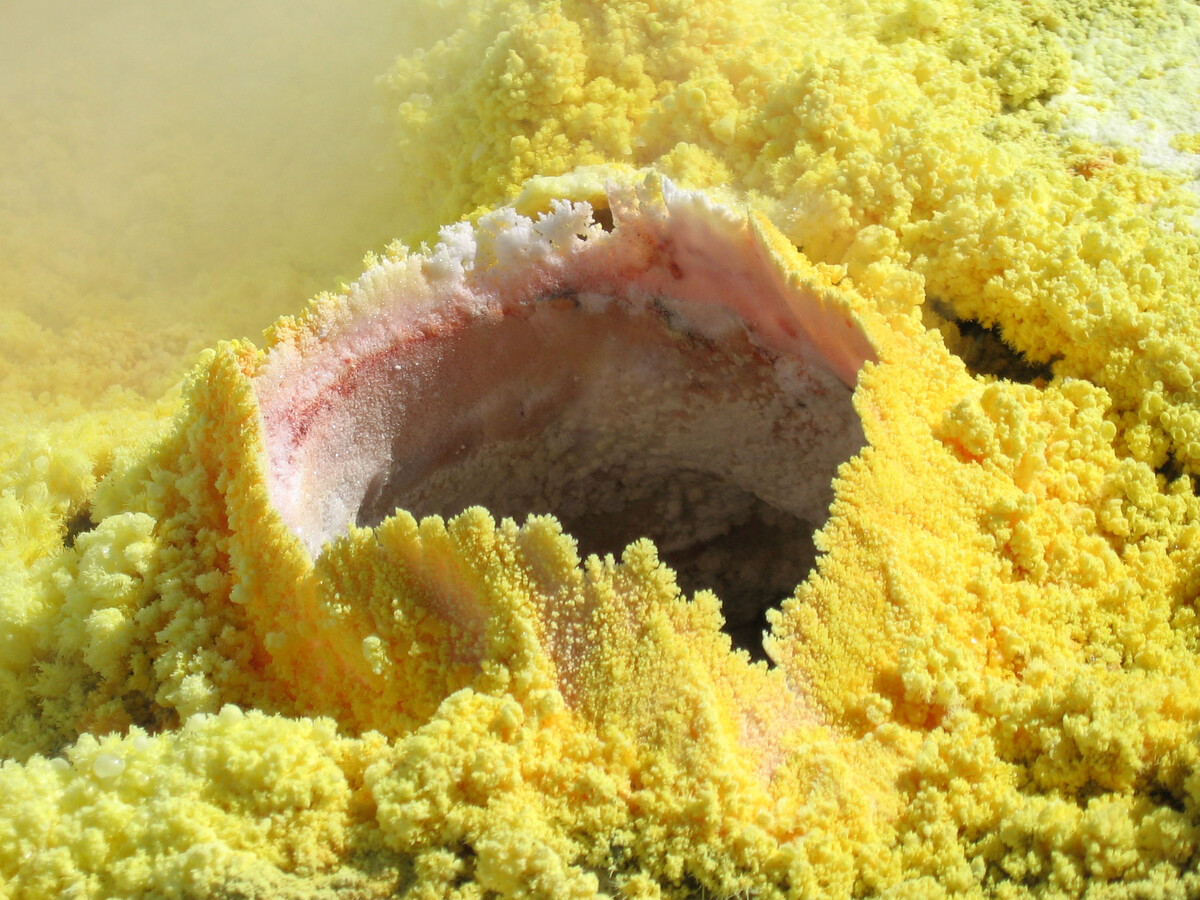
Fumaroles are found exclusively in areas of volcanic activity, although frequently fumaroles represent the only visible manifestations (the last breath) of former volcanoes.
Most fumaroles are short-lived: there is needed a long-term supply of energy to keep the fumarole running. Usually, fumaroles appear either shortly before a volcanic eruption or – even more frequently – after the peak of volcanic activity. But there are some fumaroles or groups of fumaroles that exist for decades or even centuries.
Most common gases emitted by fumaroles are: steam, diverse sulfurous gases (SO2, H2S), carbon dioxide and less frequently: hydrogen chloride, hydrogen fluoride, as well as nitrogen, carbon monoxide, ammonia and other gases.
Unusual fumaroles
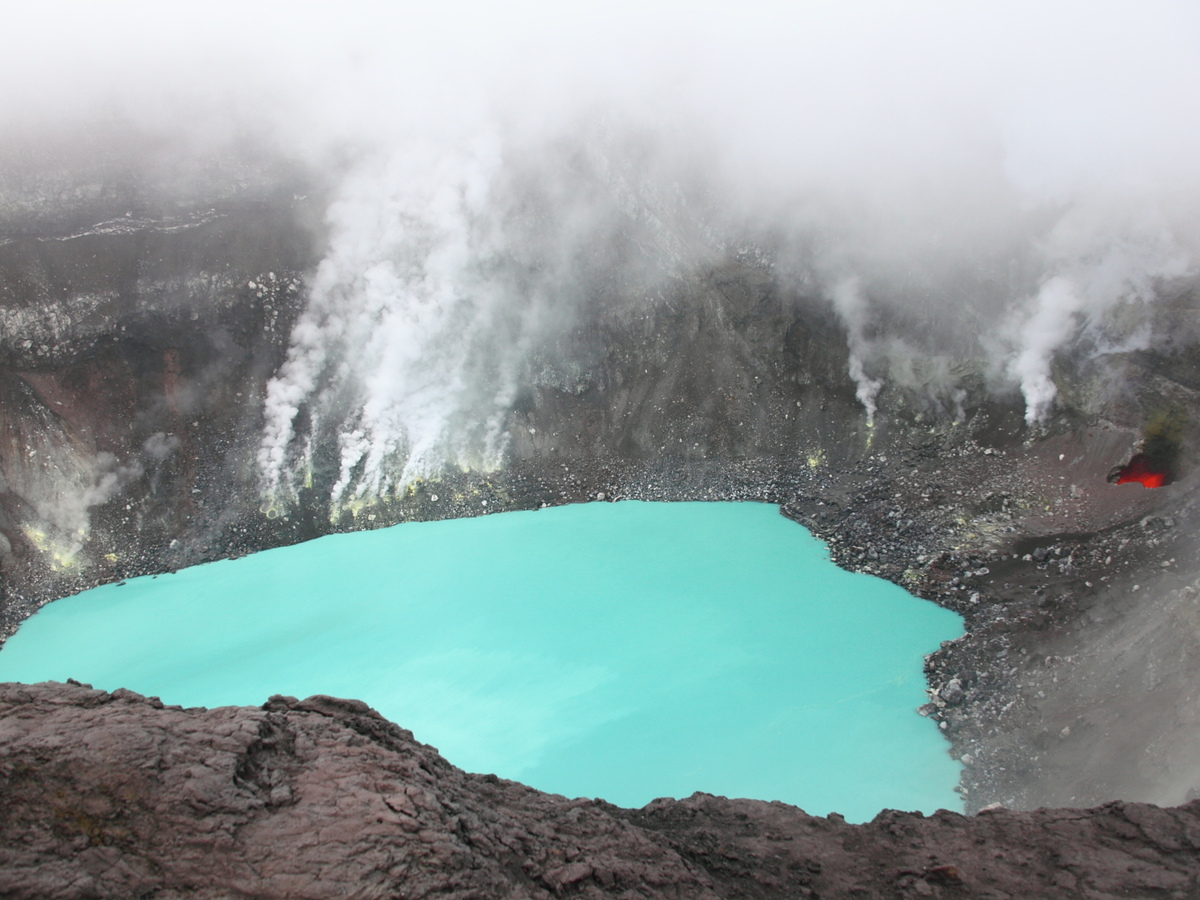
There are several unusual effects that might be created by fumaroles:
- Acidic crater lakes are acid thanks to subaquatic fumaroles that emit sulfurous gases. Initially, such crater was dry, but, rainwater gathered in this natural depression, creating a lake. Sulfurous gases at the bottom of the lake continued to flow, creating a lake of sulfuric acid. Acidity of Kawah Ijen crater lake in the central part might reach 0.13 pH. This lake is a lot more acidic than car battery liquid. Similar extreme acidity is reached in rather many crater lakes around the world.
- Rare and beautiful minerals are deposited by fumarolic gases, that are suddenly cooled, when they reach the atmosphere. Beautiful are the large sulfur crystals, but there are a lot more exotic minerals, such as kudriavite, rheniite, cadmoindite that are around the fumaroles of some Kuril islands.
- Fumarolic towers – naturally grown towers of minerals or ice that are deposited around the fumarole. Amazing are the giant, up to 18 m high ice towers that are shaped around several Antarctic volcanoes, but not less impressive are towers of pure, yellow sulfur crystals around some fumaroles of Ebeko volcano (Kuril Islands) and elsewhere.
- Roaring fumaroles – many fumaroles emit some noises, but some emit truly hellish roar. Fumaroles of the Roaring Mountain in Yellowstone National Park could be heard miles away in the early 20th century.
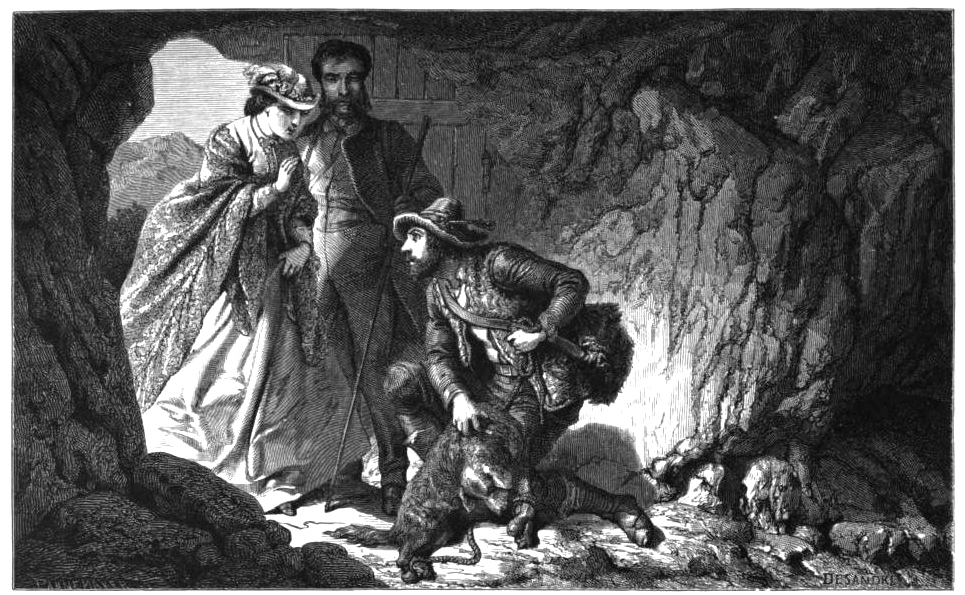
Grotta del Cane (Cave of Dogs). Drawing from 1865 depicts a suffocated dog that is shown to tourists. / unknown, possibly Jules Marie Désandré, Wikimedia Commons / public domain - Dangerous gases – there are several legendary locations around the world, where the fumaroles emit (or emitted) dangerous gases. If the gas is heavier than air (e.g. carbon dioxide), then, entering into a depression that is filled with such a gas, might be deadly. In Europe a well known case is Cave of Dogs (Italy), but there are several more such dangerous places, such as Kikhpinych Death Valley (Kamchatka in Russia).
 Top 25 locations with interesting and unusual fumaroles
Top 25 locations with interesting and unusual fumaroles
Antarctica and Subantarctic islands
Mount Erebus fumarole ice towers
Antarctica
Here, constant effluxes of fumaroles have created hundreds of unusual ice towers, some up to 18 meters high.
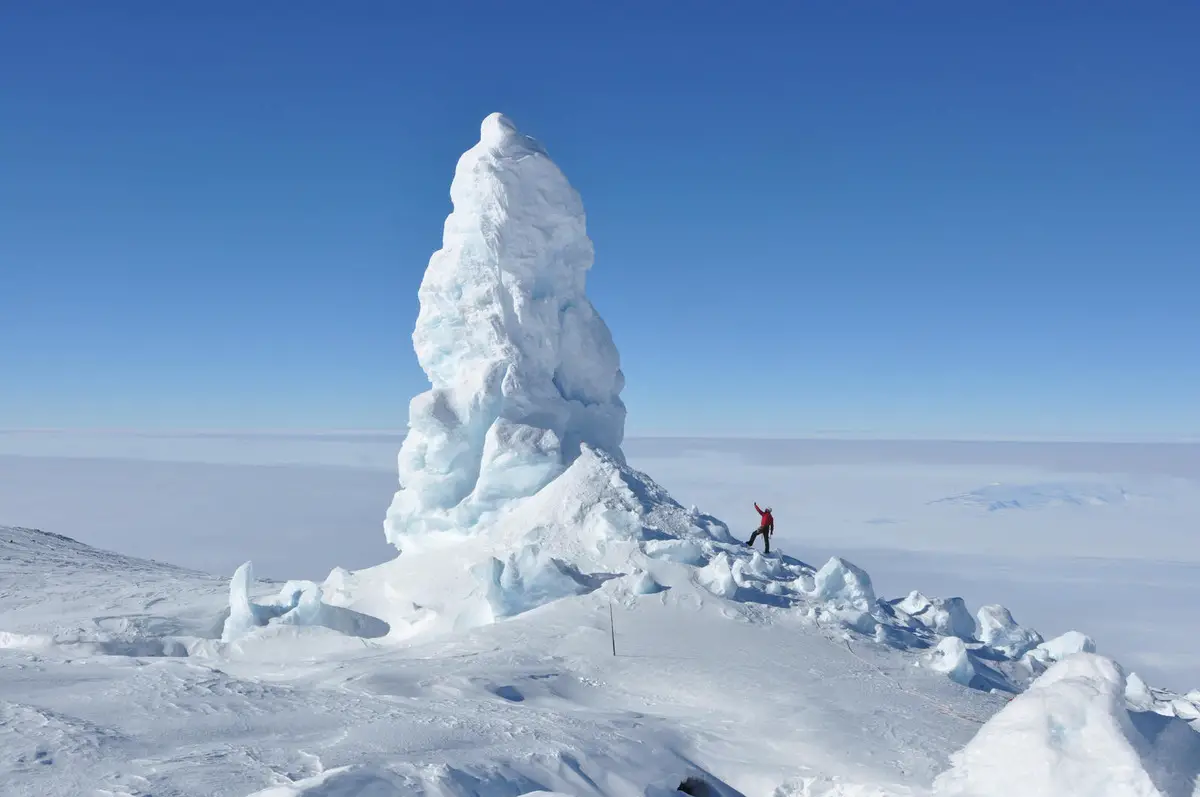
Mount Melbourne fumarole ice towers
Antarctica
Up to 7 m high ice towers that were created by fumaroles.
Mount Berlin fumarole ice towers
Antarctica
Near the rims of northern and western calderas have been noticed ice towers shaped by fumaroles.
Asia
Kawah Ijen
Indonesia
Turquoise-colored, extremely acid lake with a diameter of 1 km. Acidity – 0.5 pH. Nearly pure deposits of sulfur are located in the caldera. The burning sulfuric gas creates a very impressive blue flame in the night. Both the acidic lake and sulfuric deposits are created by the fumaroles.
Maly Semyachik
Russia, Kamchatka Krai
1,560 m tall volcano with 500 metre wide, light green, acid lake, that has been acidicified by fumaroles.
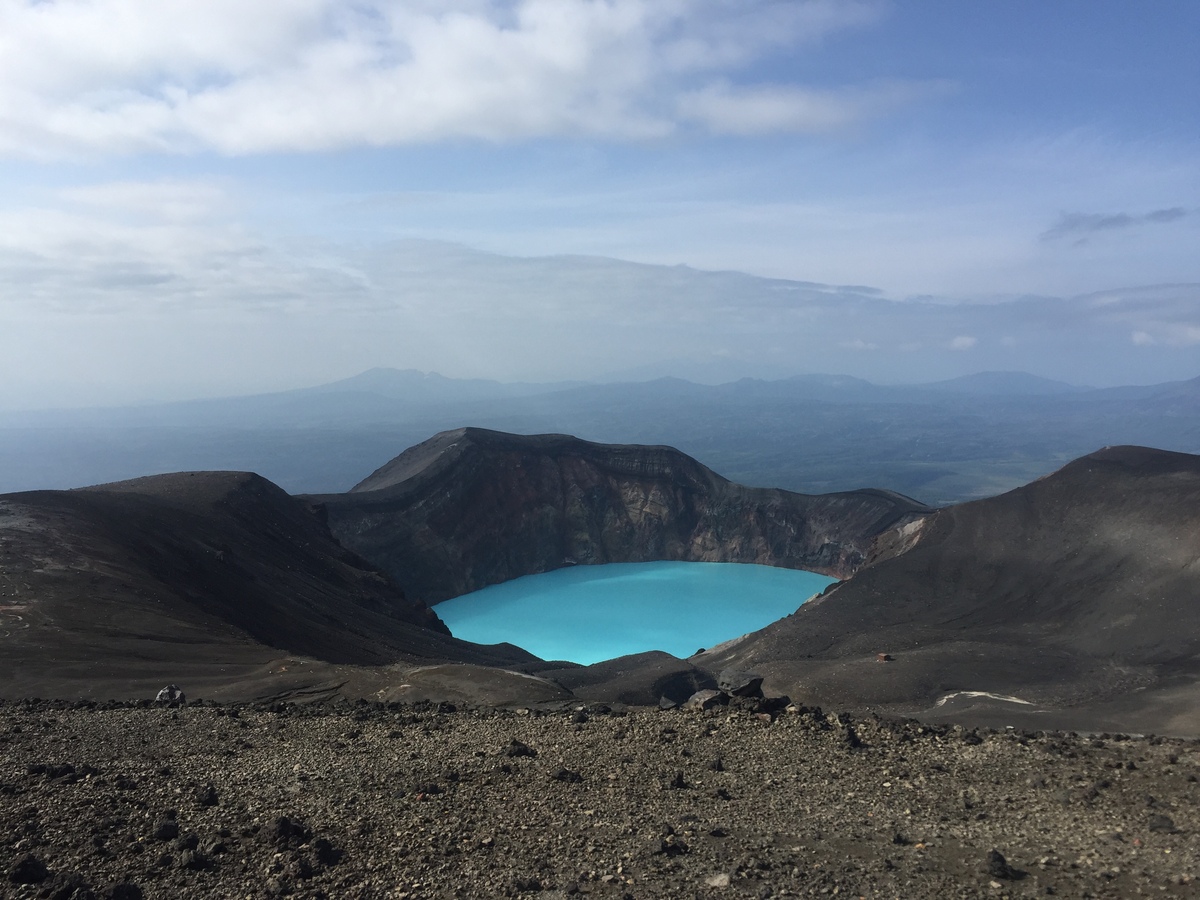
Nakadake Crater Lake (Yudamari)
Japan, Kyūshū
Crater with a lake that contains very acidic (from less than 0.5 to 1.7 pH), 50 – 70 °C hot water. Lake water changes color over the time from almost white and azure to emerald green. Lake is sacred, it is located in Aso caldera – one of the largest volcanic calderas in the world, 25 by 18 km large.
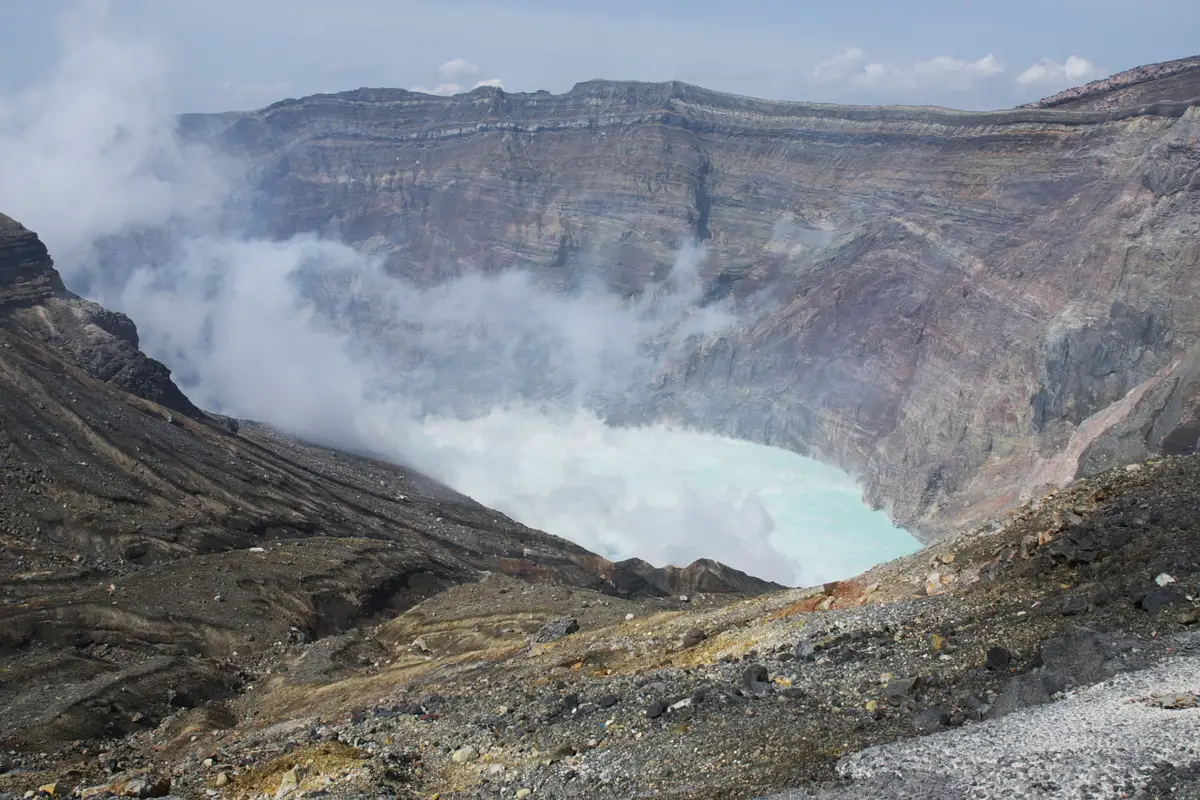
Mutnovsky geyser valley
Russia, Kamchatka Krai
Field of fumaroles, some are beating in the beds of cold springs, creating small fountains. These are not true geysers, but certainly – interesting natural landmarks.
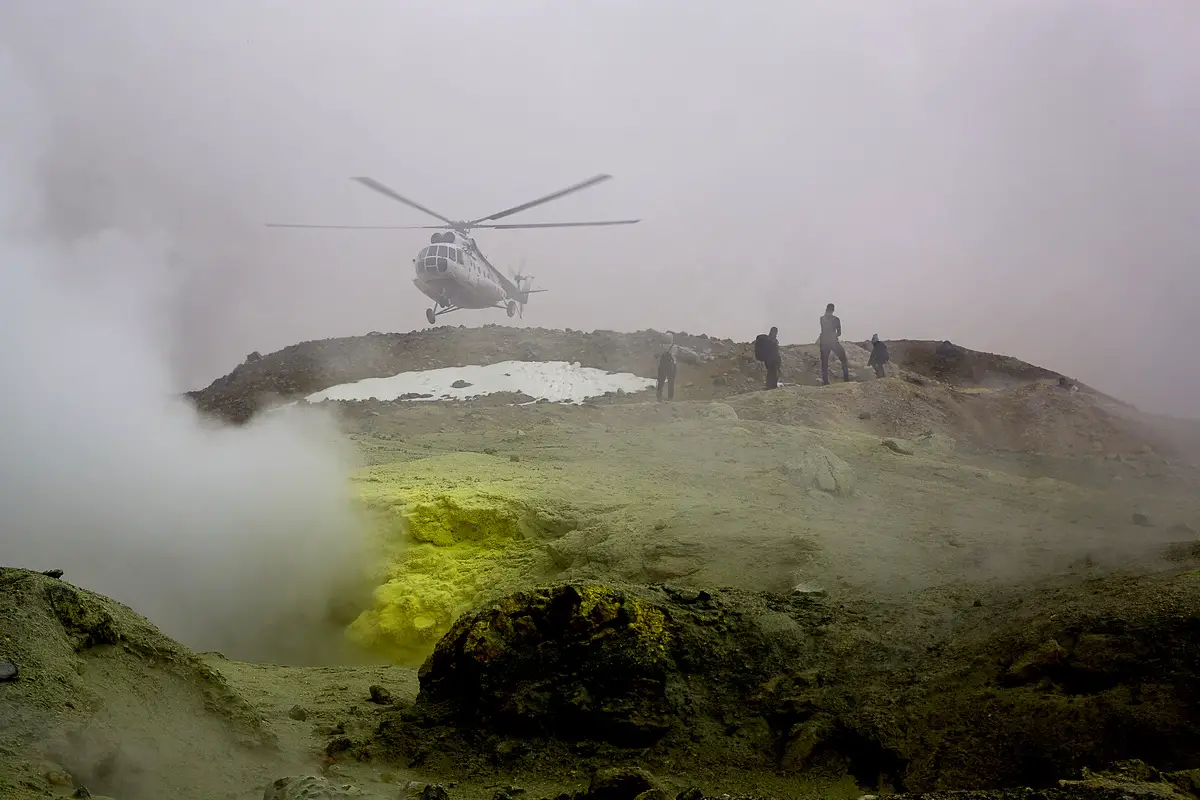
Kikhpinych Death Valley
Russia, Kamchatka Krai
In the valley of Geysernaja River is an area where volcanic gases accumulate. In spring, when snow melts, the concentration of gases becomes dangerous to life and many animals and birds, who come to the river, die. This gas is a mix of hydrogen sulphide, carbon dioxide, sulphur dioxide and carbon disulphide. The dangerous area is some 2 km long and several hundreds of meters wide.
Ebeko northeastern fumarolic field
Russia, Sakhalin Oblast
Unusual field of fumaroles that emit rare chemical elements and create rare minerals. Several fumaroles have created weird formations – sulphur towers that are up to 1.5 m high, some in bright yellow color. Fumaroles have created ultraacidic rivers that flow into Okhotsk Sea.
Bum-bag fumarole fields and Bu-ot fumarole field of Binubulauan
Philippines
Impressive fumarolic fields with powerful fumaroles. Bu-ot fumarole field is located in a deep canyon with a sulfur rich stream flowing through it. Bum-bag fumarole fields are four closely located groups of fumaroles with bare ground and impressive sulfur formations.
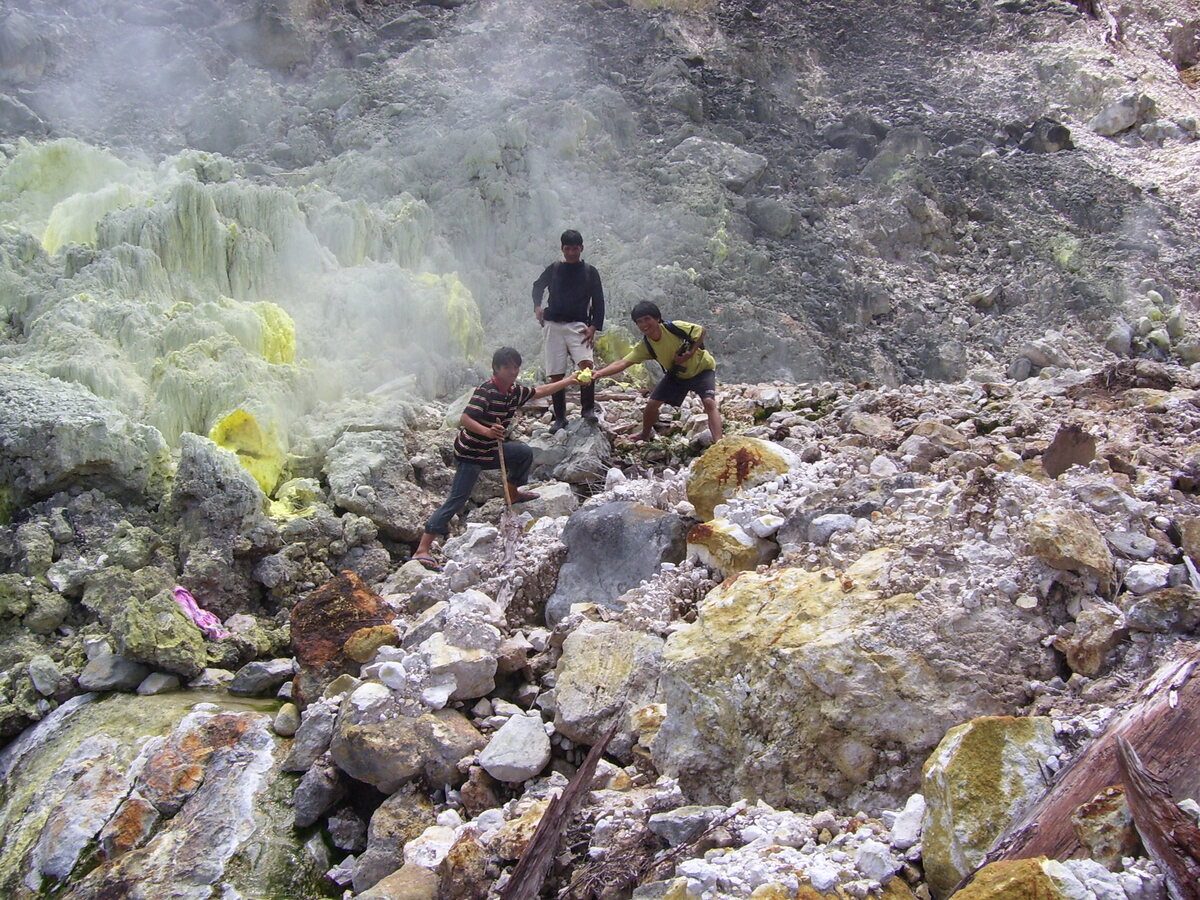
Australia and Oceania
Ove geothermal area
Solomon Islands
Spectacular geothermal area amidst jungle. Whole hillside is cleared from vegetation by acidic sulfur deposits. Fumaroles, hot sulfur springs. Sulfuric springs flow into brackish Lake Ove – important habitat of megapodes.
North-West Eifuku Champagne Vent
Northern Mariana Islands (United States)
A submarine vent on a volcano that emits almost pure liquid carbon dioxide at 1,600 m depth. Such phenomenon is known in three places on Earth and at Eifuku it is most abundant.
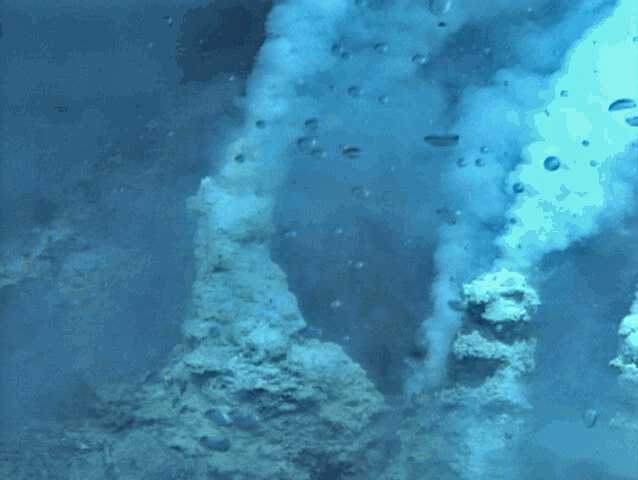
Te Kopia Mud Geyser
New Zealand, Waikato
Unusual and a fairly spectacular mud geyser. During the periods of activity every 10-30 minutes, it ejects a muddy fountain that is some 3-10 m tall.
Europe
Námafjall Geothermal Area
Iceland
Large, colorful geothermal field with boiling mud pots, solfataras, sulfur deposits. Once important mine of sulfur for medieval Europe.
Solfatara volcanic crater
Italy, Campania
Active volcano with fumaroles and mud pools.
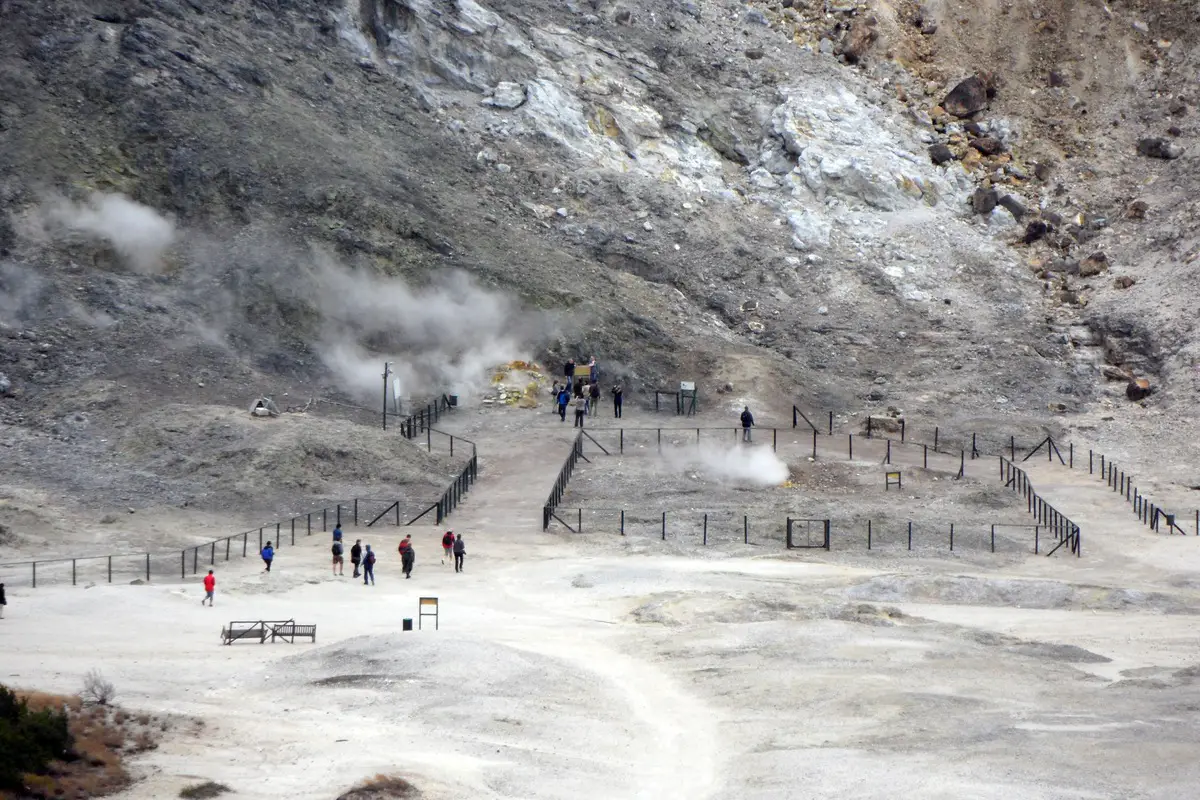
Furnas do Enxofre
Azores, Terceira
Field of fumaroles. Gases are up to 95° C hot. Some fumaroles have shaped sulfur coated holes in the ground. The landscape with fumes and dense vegetation looks unusual.
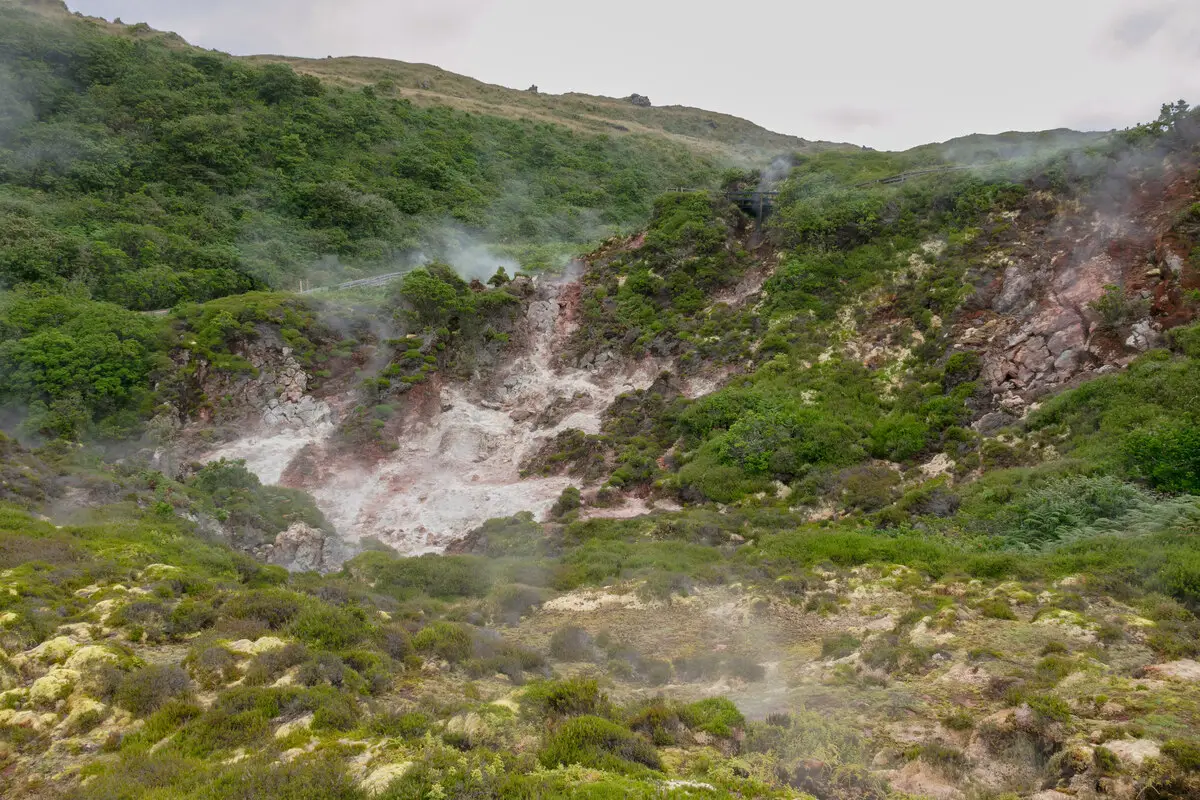
Öskurhóll
Iceland
Large fumarole with an impressive sinter cone. Earlier it was very noisy and emitted frightening noises.
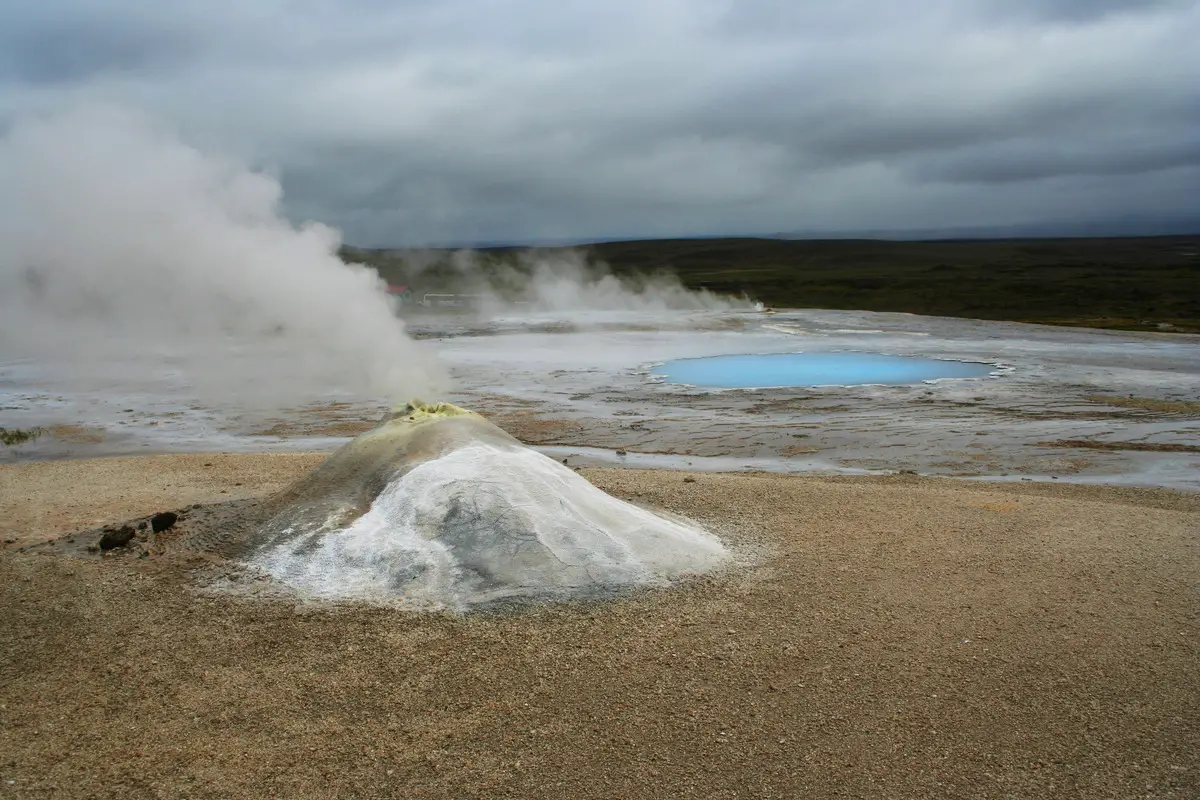
North America
Boiling Lake
Dominica
Flooded fumarole, filled with bubbling greyish-blue water and enveloped in steam. The diameter of this lake is some 63 m. The temperature of the water is 82 – 100 C°. In the late 19th century in the center of the lake formed a geyser that was up to 18 m high. Second largest boiling lake in the world.
Mount Martin
United States, Alaska
Volcano with a very active fumarolic activity. The crater contains an intermittent acidic lake and thick sulfur deposits.
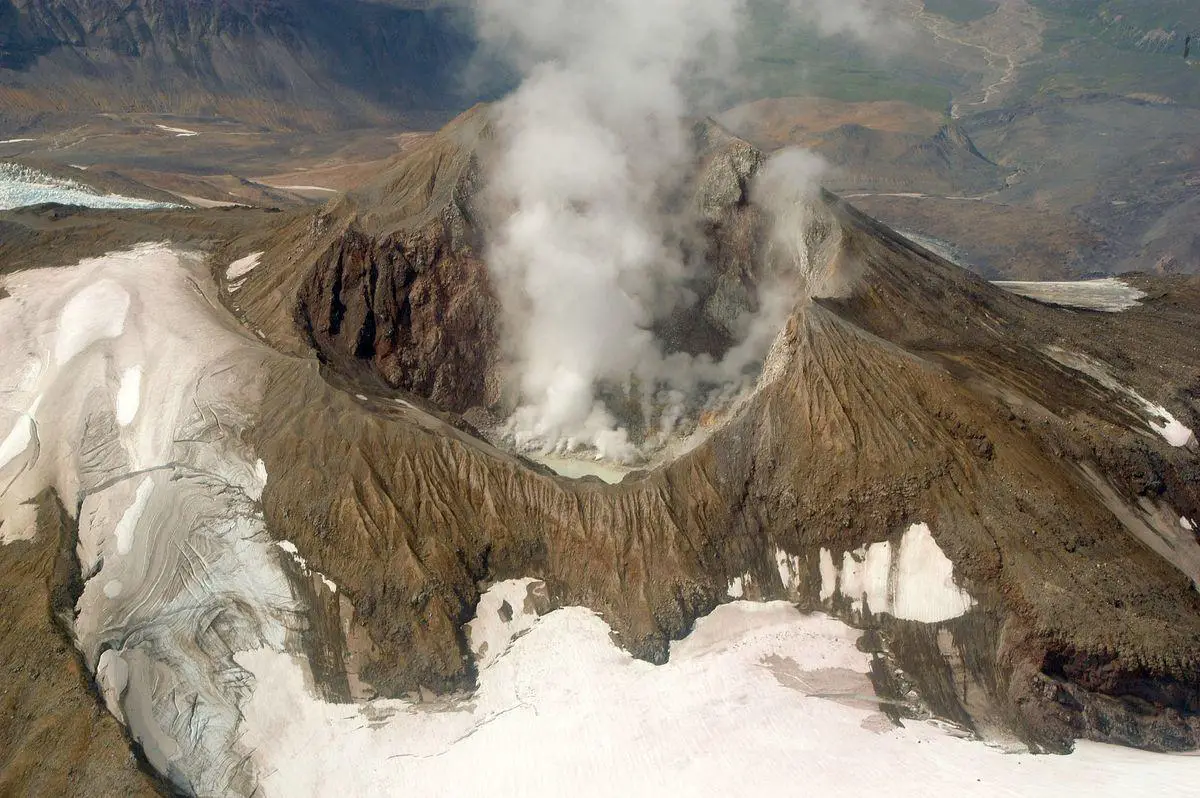
Tecuamburro volcano
Guatemala
In the crater of this volcano is located acidic crater lake, there are fumaroles, hot springs and mudpots.
Valley of Ten Thousand Smokes
United States, Alaska
Valley that is filled with volcanic ash from an eruption in 1912. The layer of ashes is up to 210 m deep. After the eruption there formed thousands of fumaroles from this ashfield, most are extinct by now. Rivers have formed deep canyons in this ashfield.
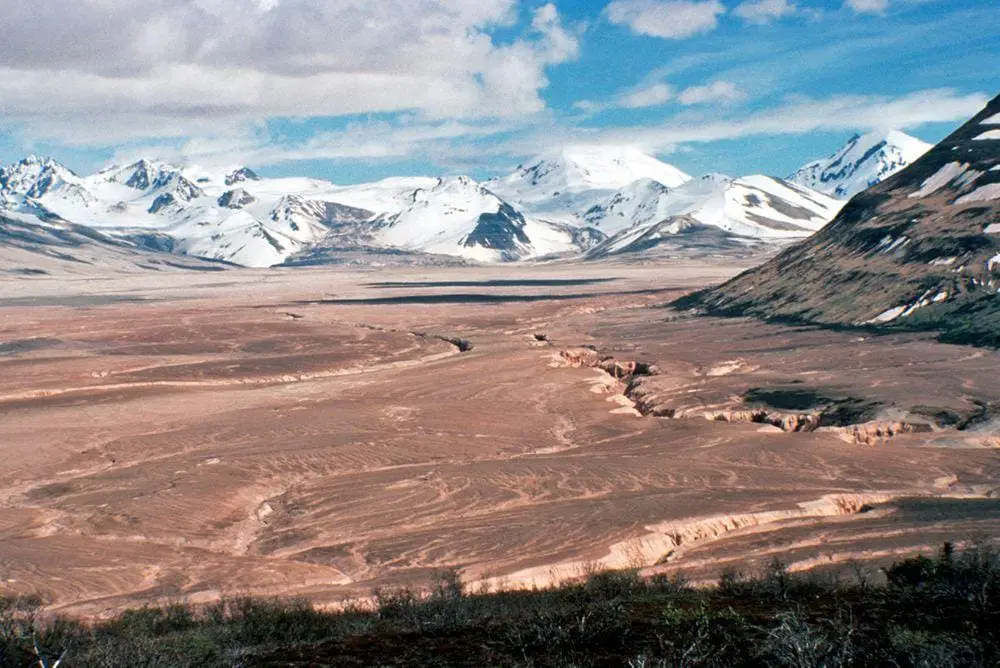
Fumaroles of Mount Griggs
United States, Alaska
Hot and vigorously active fumaroles on the southwest flank of the volcano are roaring very loudly and can be heard far away.
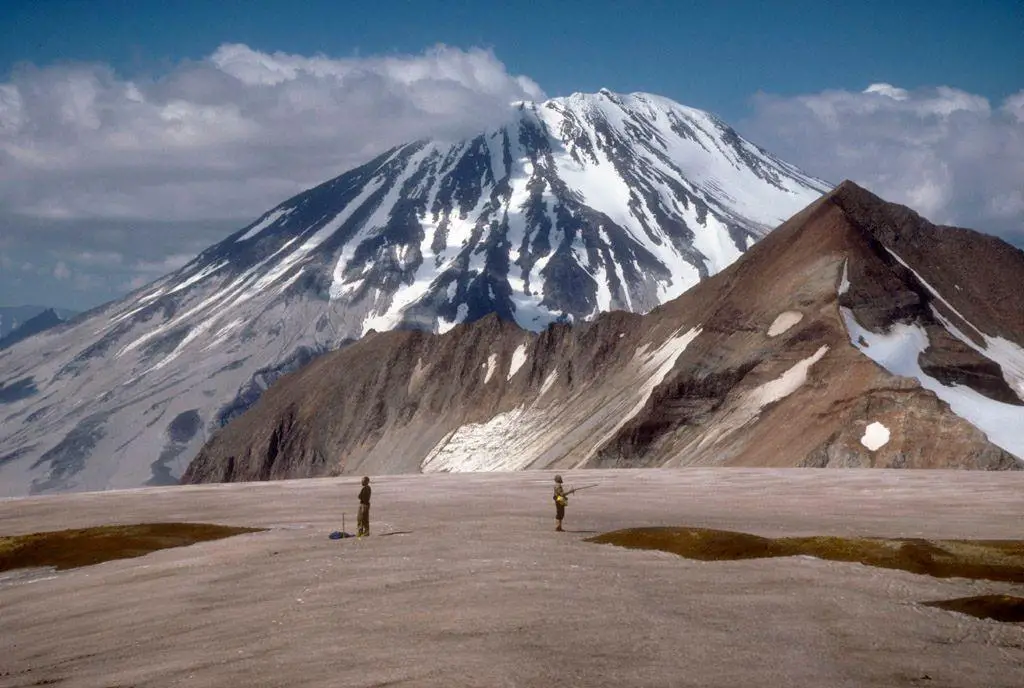
Death Gulch
United States, Wyoming
A ravine with sulphurous, light ground. Emanations of volcanic gas have killed forest animals, including a group of grizzly bears in the 19th century. Today there are no reports of dead animals, but the gases are very pungent.
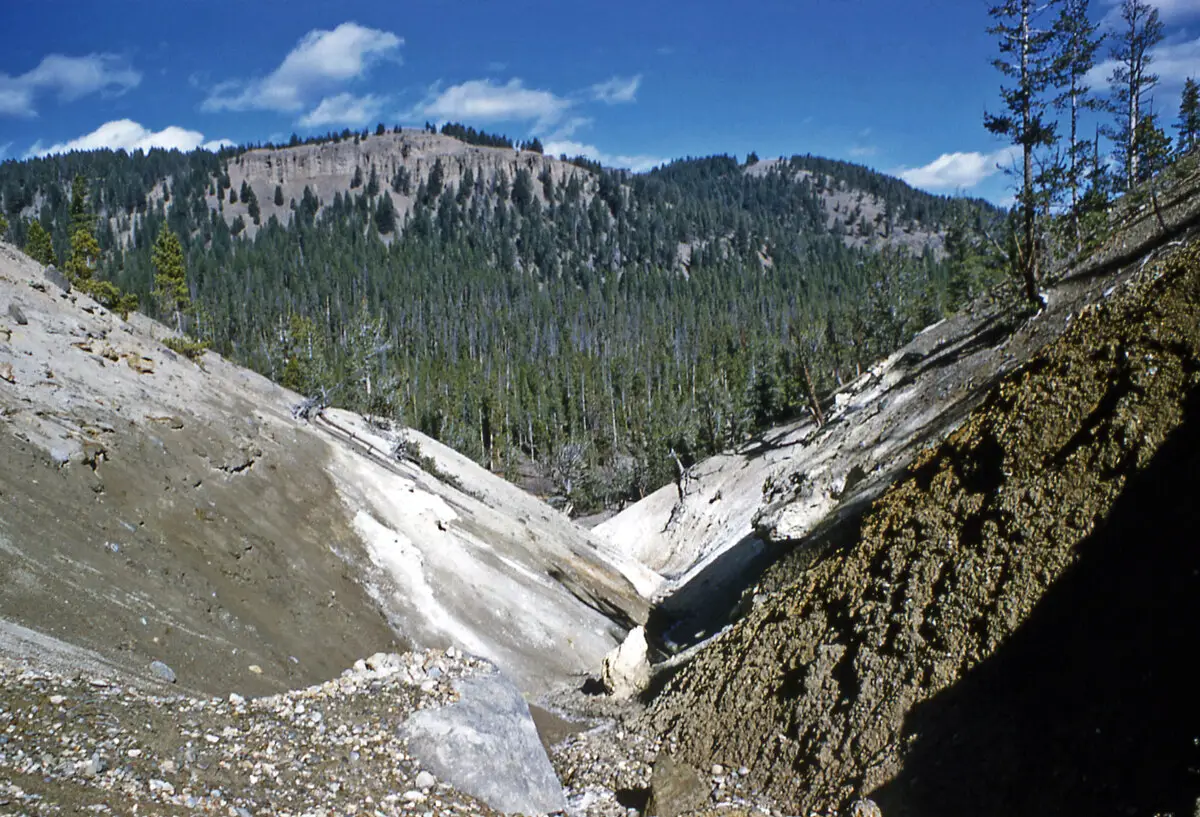
South America
Volcan de Azufre
Galápagos Islands (Ecuador)
Fumarolic area in the crater of Sierra Negra volcano where the extremely rare terrestrial sulfuric flows have been identified.
Copahue crater lake
Argentina
Approximately 300 m wide, briny and acidic lake with light colored water.
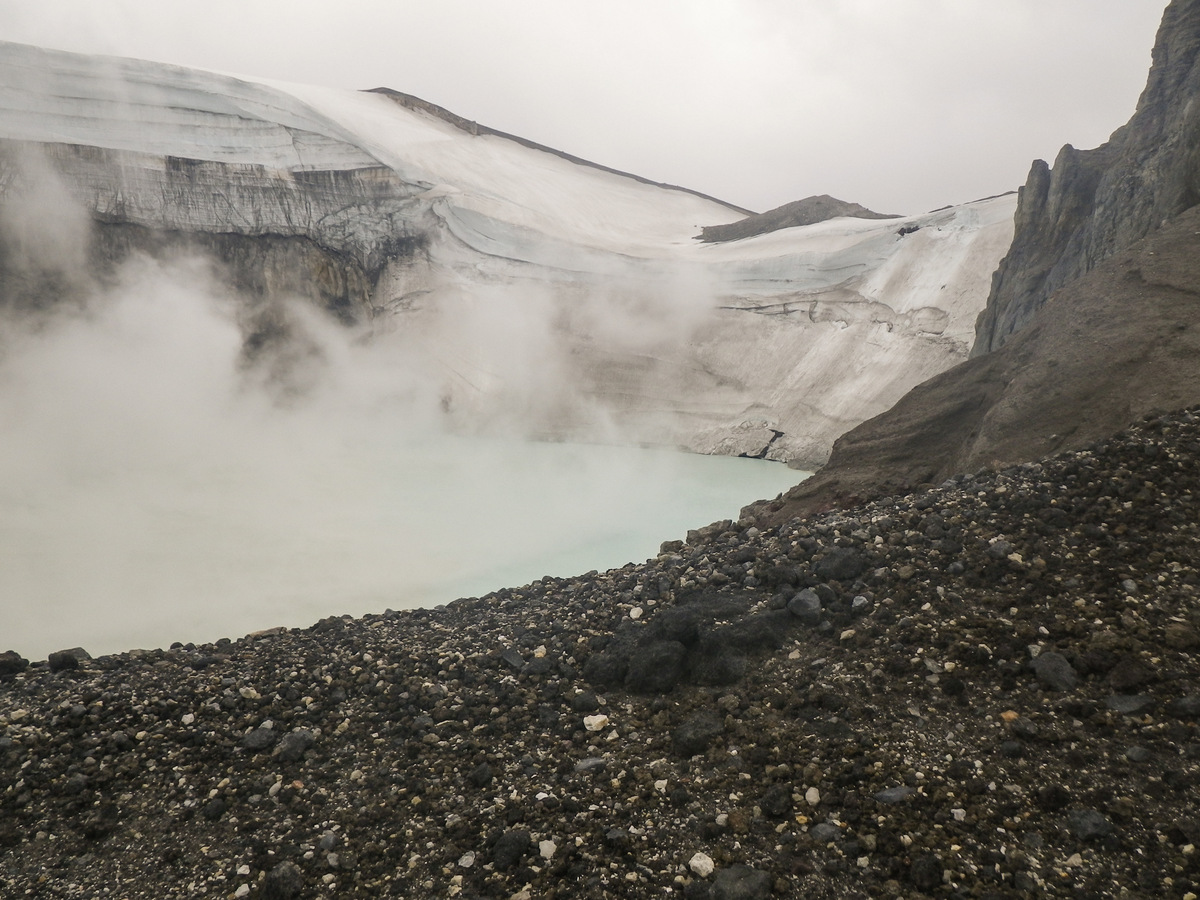
 Recommended books
Recommended books
Geothermal Treasures: Maori Living with Heat and Steam
Natural geothermal phenomena – geysers, hot springs and mud pools – have drawn people to the thermal region of New Zealand for years. Locals and tourists are captivated by the beauty and magic of bubbling mud, steam and hot water gushing from the earth. New Zealand’s world-class geothermal resource is a source of energy, a tourist attraction and a treasure of great historical, cultural, spiritual and economic importance for Måaori. In this book, Måaori traditional stories, understandings and history stand alongside geothermal science in an exploration of the thermal phenomena of the Volcanic Plateau.
Volcanoes
Exceptional nonfiction for children from two of the most trusted names in science education: Seymour Simon and the Smithsonian Institution.

